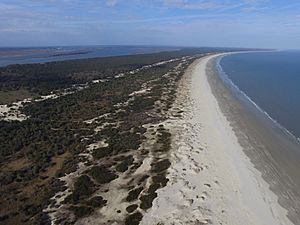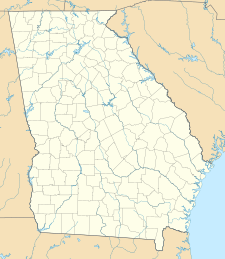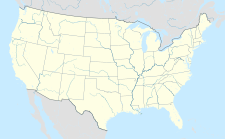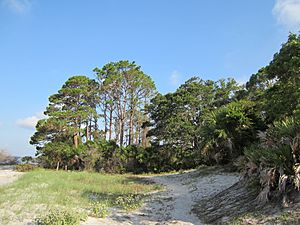Cumberland Island National Seashore facts for kids
Quick facts for kids Cumberland Island National Seashore |
|
|---|---|
|
IUCN Category II (National Park)
|
|
| Location | Camden County, Georgia, US |
| Nearest city | St. Marys, Georgia |
| Area | 36,415.39 acres (147.3679 km2) 18,700.34 acres (75.6776 km2) federal |
| Established | October 23, 1972 |
| Visitors | 40,291 (in 2005) |
| Governing body | National Park Service |
| Website | Cumberland Island National Seashore |
Welcome to Cumberland Island National Seashore! This special place protects most of Cumberland Island in Camden County, Georgia. It's the biggest of Georgia's beautiful Golden Isles. Here, you can explore amazing beaches, sand dunes, marshlands, and clear freshwater lakes. The seashore also keeps many old buildings and important historical spots safe.
Groups like the Sierra Club and the Georgia Conservancy helped a lot to create and protect this wonderful seashore.
You can only reach the island by boat. The main visitor center, a museum, and the ferry to the island are all in St. Marys, Georgia. Only a limited number of people can visit each day, so it's a good idea to book your ferry tickets early. You can even go camping on the island! A large part of the seashore, about 9,886 acres (4,000 hectares), is called the Cumberland Island Wilderness. This means it's kept as wild and natural as possible.
Contents
Island History
This special national seashore was officially created by the United States Congress on October 23, 1972. The National Park Service takes care of it. Later, on September 8, 1982, a large part of the island was named a wilderness area. This means it's a protected place where nature can thrive without much human interference. An important historical area called the High Point-Half Moon Bluff Historic District was added to the National Register of Historic Places in 1978.
Amazing Animals and Plants
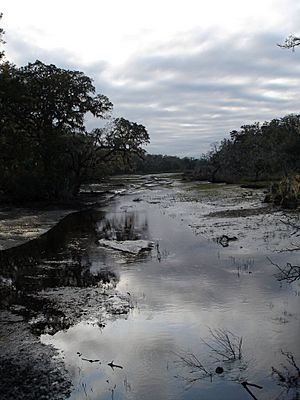
Cumberland Island National Seashore is full of many different kinds of plants and animals that live near the coast. The National Park Service has wildlife experts and scientists who study the island. They make sure the animals and plants are healthy. The park has at least 23 different types of natural areas, making it the biggest and most diverse of Georgia's barrier islands. Many kinds of birds, especially those that fly long distances, have been studied here.
Fun Things to Do
The public parts of Cumberland Island are managed by the National Park Service. They allow only 300 people on the island at one time. Campers can stay for up to seven nights. Remember, you can only get to the island by boat! The Cumberland Queen ferry runs three times a day from March 1 to September 30. From October 1 to November 31, it runs twice a day. From December 1 to February 28, the boat runs twice a day only on Mondays through Thursdays. The ferry leaves from St. Marys, Georgia on the mainland.
You can't bring cars on the ferry, and there are no paved roads or trails on the island. You can rent bikes at the Sea Camp Dock, but they are given out first-come, first-served. If you want, you can bring your own bike on the ferry for an extra fee. There is one camping area with running water and cold showers. Other camping spots are more rustic and do not have these facilities. Since there are no stores on the island, you must bring all your food, ice, and supplies with you from the mainland.
Explore History at the Museum
The Cumberland Island National Seashore Museum is in St. Marys, Georgia. It's on the mainland, right across from the park's visitor center. The main part of the museum tells the story of the island's past. You can learn about the Timucua Indians, old plantations, and the homes of the wealthy Carnegie family. It also shares facts about General Nathanael Greene, a hero from the American Revolution, and Eli Whitney, who invented the cotton-gin. You can see information about the ruined mansion called Dungeness and the beautiful Plum Orchard estate.
There's also a special exhibit about transportation, showing old wagons, carriages, and fancy travel gear. A newer exhibit, "Forgotten Invasion," explains how Cumberland Island and Camden County were taken over during the War of 1812. Volunteers help run the museum, and it's open on weekday afternoons.
The Cool Ice House Museum
This building was built around 1900. Its job was to store huge blocks of ice that were shipped all the way from New England to Georgia. The ice was cut from frozen lakes, then wrapped in burlap sacks with straw and sawdust to keep it from melting during the long trip. The ice house itself was like a giant cooler, with thick walls packed with straw and sawdust for insulation. It had a special roof design to let warm air escape. Later, when electricity came to the island and ice could be made there, the ice house became a storage area.
Today, the National Park Service has fixed up the building. It's now a small museum with old items and copies of things from the island's very early history, colonial times, early American days, and the Gilded Era. During the repairs, they found old foundations made of Tabby concrete from the early 1800s. These might have been from a general store that was open when the Greene-Miller families lived on the island.
Historic Homes: Plum Orchard and Dungeness
The Dungeness and Plum Orchard areas were named National Historic Districts in 1982 and 1984. The Dungeness area has the remains of the grand Carnegie Dungeness mansion, its other buildings, and gardens. It also includes the Tabby House, which is very old, and a cemetery. The Plum Orchard Historic District has the Plum Orchard mansion, which was built in the 1890s and is still in great shape. You can also find a shell midden there, which is a pile of shells left by people over 4,000 years ago, and other buildings that supported the mansion, like an electrical house.
Island Weather
|
||||||||||||||||||||||||||||||||||||||||||||||||||||||||||||||||||||||||||||||||||||||||||||||||
More to Explore
- Grover Island
- Carol Ruckdeschel
- Georgia's Colonial Coast Birding Trail


